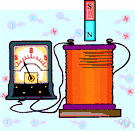coulomb
Also found in: Thesaurus, Medical, Legal, Financial, Acronyms, Encyclopedia, Wikipedia.
cou·lomb
(ko͞o′lŏm′, -lōm′)n. Abbr. C
The basic unit of electric charge, equal to the quantity of charge transferred in one second by a steady current of one ampere, and equivalent to 6.2415 × 1018 elementary charges, where one elementary charge is the charge of a proton or the negative of the charge of an electron. A coulomb's value in the International System differs very slightly from that in the meter-kilogram-second-ampere system of units. See Table at measurement.
adj. also cou·lom·bic (ko͞o-lŏm′bĭk, -lōm′-)
Of or relating to the Coulomb force.
[After Charles Augustin de Coulomb.]
American Heritage® Dictionary of the English Language, Fifth Edition. Copyright © 2016 by Houghton Mifflin Harcourt Publishing Company. Published by Houghton Mifflin Harcourt Publishing Company. All rights reserved.
Coulomb
(ˈkuːlɒm; French kulɔ̃)n
(Biography) Charles Augustin de (ʃarl oɡystɛ̃ də). 1736–1806, French physicist: made many discoveries in the field of electricity and magnetism
coulomb
(ˈkuːlɒm)n
(Units) the derived SI unit of electric charge; the quantity of electricity transported in one second by a current of 1 ampere. Symbol: C
[C19: named after Charles Augustin de Coulomb]
Collins English Dictionary – Complete and Unabridged, 12th Edition 2014 © HarperCollins Publishers 1991, 1994, 1998, 2000, 2003, 2006, 2007, 2009, 2011, 2014
cou•lomb
(ˈku lɒm, -loʊm, kuˈlɒm, -ˈloʊm)n.
the SI unit of quantity of electricity, equal to the quantity of electric charge transferred in one second across a conductor in which there is a constant current of one ampere. Abbr.: C
[1880–85; after Coulomb]
Cou•lomb
(ˈku lɒm, -loʊm, kuˈlɒm, -ˈloʊm)n.
Charles Augustin de, 1736–1806, French physicist and inventor.
Random House Kernerman Webster's College Dictionary, © 2010 K Dictionaries Ltd. Copyright 2005, 1997, 1991 by Random House, Inc. All rights reserved.
cou·lomb
(ko͞o′lŏm′, ko͞o′lōm′) A unit used to measure electric charge. One coulomb is equal to the quantity of charge that passes a point in an electric circuit in one second when a current of one ampere is flowing through the circuit.
The American Heritage® Student Science Dictionary, Second Edition. Copyright © 2014 by Houghton Mifflin Harcourt Publishing Company. Published by Houghton Mifflin Harcourt Publishing Company. All rights reserved.
coulomb
The unit of electric charge, defined as the quantity of electricity conveyed by one ampere in one second.
Dictionary of Unfamiliar Words by Diagram Group Copyright © 2008 by Diagram Visual Information Limited
ThesaurusAntonymsRelated WordsSynonymsLegend:
Switch to new thesaurus
| Noun | 1. |  coulomb - a unit of electrical charge equal to the amount of charge transferred by a current of 1 ampere in 1 second coulomb - a unit of electrical charge equal to the amount of charge transferred by a current of 1 ampere in 1 secondcharge unit, quantity unit - a measure of the quantity of electricity (determined by the amount of an electric current and the time for which it flows) abcoulomb - a unit of electrical charge equal to 10 coulombs ampere-minute - a unit of charge equal to 60 coulombs |
| 2. | Coulomb - French physicist famous for his discoveries in the field of electricity and magnetism; formulated Coulomb's Law (1736-1806) |
Based on WordNet 3.0, Farlex clipart collection. © 2003-2012 Princeton University, Farlex Inc.
Translations
Coulomb
Collins Spanish Dictionary - Complete and Unabridged 8th Edition 2005 © William Collins Sons & Co. Ltd. 1971, 1988 © HarperCollins Publishers 1992, 1993, 1996, 1997, 2000, 2003, 2005
coulomb
n → Coulomb nt
Collins German Dictionary – Complete and Unabridged 7th Edition 2005. © William Collins Sons & Co. Ltd. 1980 © HarperCollins Publishers 1991, 1997, 1999, 2004, 2005, 2007